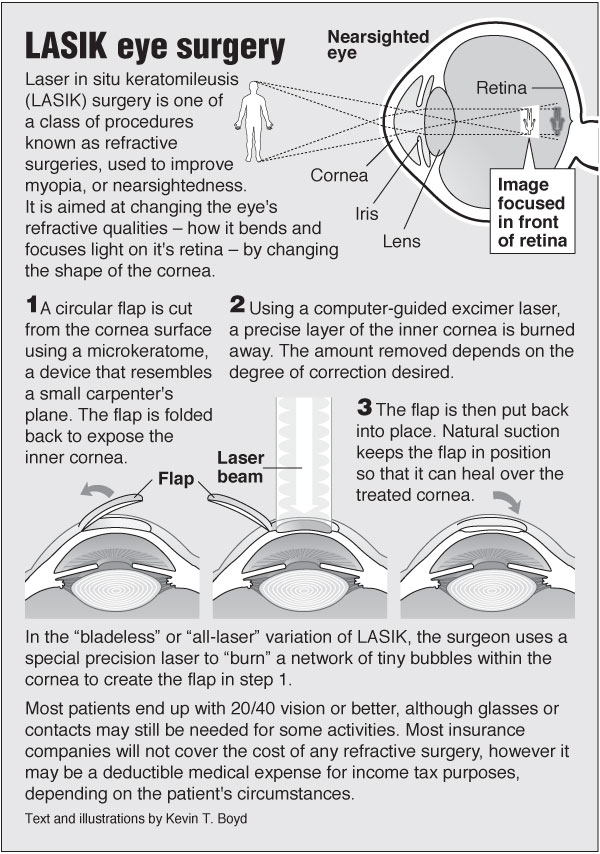Thinking Twice On SMILE Surgical Procedure? Delve Into Essential Factors To Consider And Insights To Aid You Make An Educated Decision Regarding Your Aesthetic Future
Thinking Twice On SMILE Surgical Procedure? Delve Into Essential Factors To Consider And Insights To Aid You Make An Educated Decision Regarding Your Aesthetic Future
Blog Article
Staff Author-Banke Storm
If you're pondering SMILE eye surgical treatment, contemplate this: are you prepared to embrace prospective visual freedom, or does the idea of any type of dangers make you hesitate? Your decision will depend upon a cautious equilibrium of considering the advantages against the unpredictabilities. It's critical to delve much deeper into the nuances of SMILE surgical treatment to make an enlightened choice that aligns with your aesthetic goals.
Recognizing SMILE Eye Surgical Treatment
When thinking about SMILE Eye Surgical procedure, it is very important to understand the treatment and its advantages. SMILE, which means Tiny Cut Lenticule Removal, is a minimally invasive laser eye surgical treatment that deals with usual vision problems like myopia (nearsightedness).
During the procedure, your eye cosmetic surgeon will certainly utilize a femtosecond laser to produce a small incision in your cornea. Through this cut, a small disc of cells called a lenticule is gotten rid of, improving the cornea and fixing your vision.
Among the essential advantages of SMILE Eye Surgical procedure is its fast healing time. Lots of people experience boosted vision within a day or more after the treatment, with marginal pain.
Additionally, SMILE is understood for its high success price in providing long-term vision adjustment. Unlike LASIK, SMILE does not need the creation of a flap in the cornea, reducing the threat of issues and permitting a much more stable corneal structure post-surgery.
Recognizing the treatment and its advantages is vital when thinking about SMILE Eye Surgical procedure for vision correction.
Benefits and drawbacks of SMILE
Thinking About SMILE Eye Surgical procedure for vision improvement includes numerous advantages and prospective downsides.
Among the main pros of SMILE is its minimally invasive nature, as it entails a small incision and commonly causes fast recovery times. The treatment is additionally recognized for creating very little discomfort and completely dry eye signs post-surgery contrasted to other vision adjustment approaches. In addition, SMILE has actually been revealed to offer exceptional aesthetic results, with several clients attaining 20/20 vision or better.
On the other hand, a potential disadvantage of SMILE is that it may not appropriate for individuals with extreme refractive mistakes, as the therapy range is somewhat restricted contrasted to LASIK. One more factor to consider is that the discovering contour for cosmetic surgeons executing SMILE can impact the availability of skilled providers in specific locations.
It's important to weigh these pros and cons carefully when determining if SMILE is the ideal option for your vision improvement requirements.
Figuring Out Qualification for SMILE
To establish if you're qualified for SMILE eye surgery, your ophthalmologist will carry out a thorough evaluation of your eye wellness and vision requirements. Throughout this analysis, elements such as the stability of your vision prescription, the density of your cornea, and the general wellness of your eyes will certainly be assessed.
Usually, cataract surgery and lens replacement for SMILE are over 22 years of ages, have a steady vision prescription for a minimum of a year, and have healthy corneas without problems like keratoconus.
Your optometrist will likewise consider your overall eye health and wellness, any type of existing eye conditions, and your way of life requires to establish if SMILE is the ideal option for you. It's necessary to connect any kind of specific visual needs or problems you may have during this analysis to ensure that the therapy aligns with your expectations.
If you aren't eligible for SMILE, your ophthalmologist may recommend alternate vision modification options that far better fit your specific requirements and eye health status.
https://www.optometrytimes.com/view/what-happened-over-10-years , making a decision whether SMILE eye surgical procedure is right for you requires careful factor to consider of your individual eye wellness and aesthetic needs. Speak with your eye doctor to determine your qualification for the procedure and consider the prospective benefits and downsides. Remember to interact any type of problems or inquiries you might have throughout the analysis procedure to make an informed choice regarding your vision modification choices.
